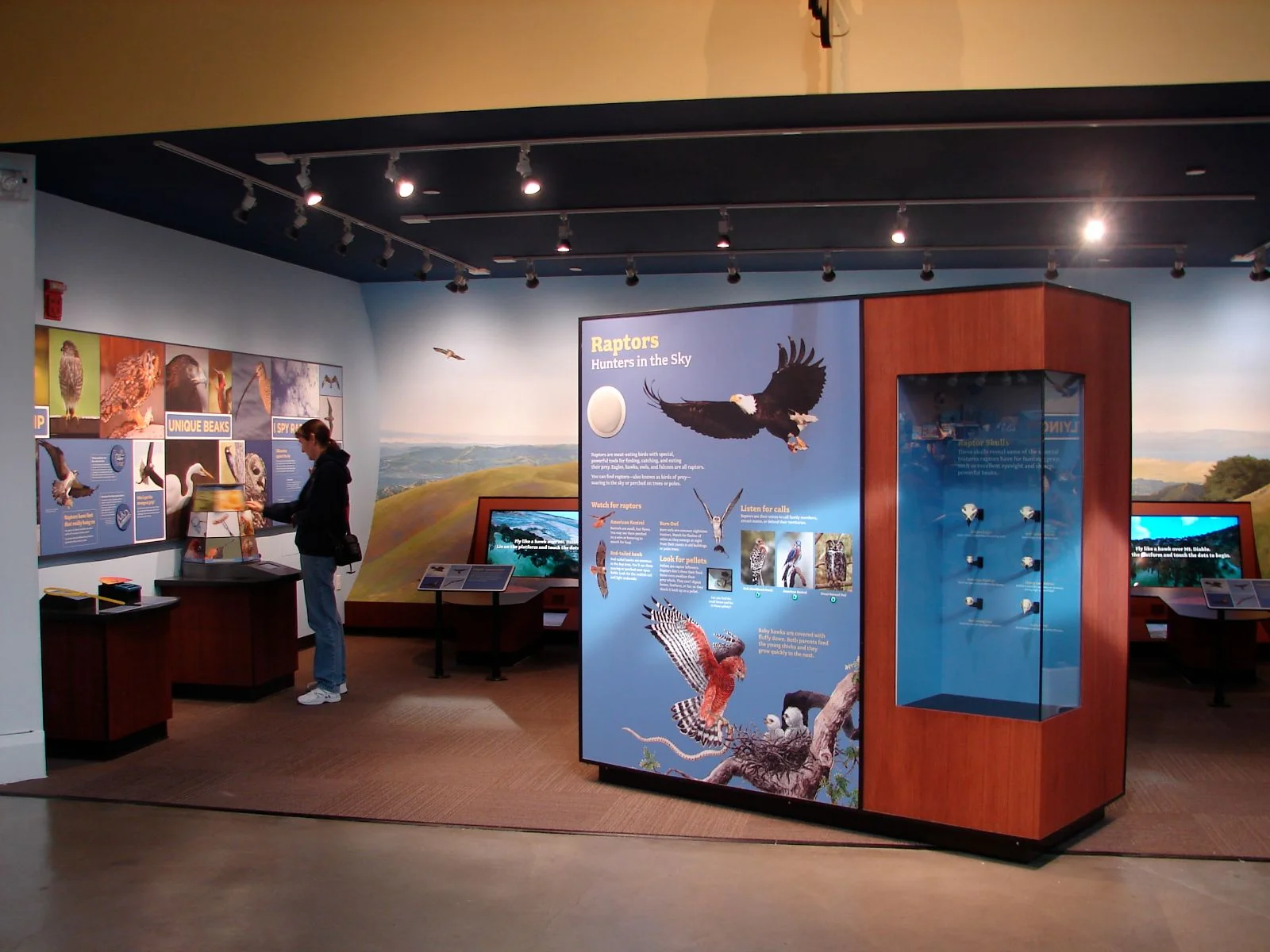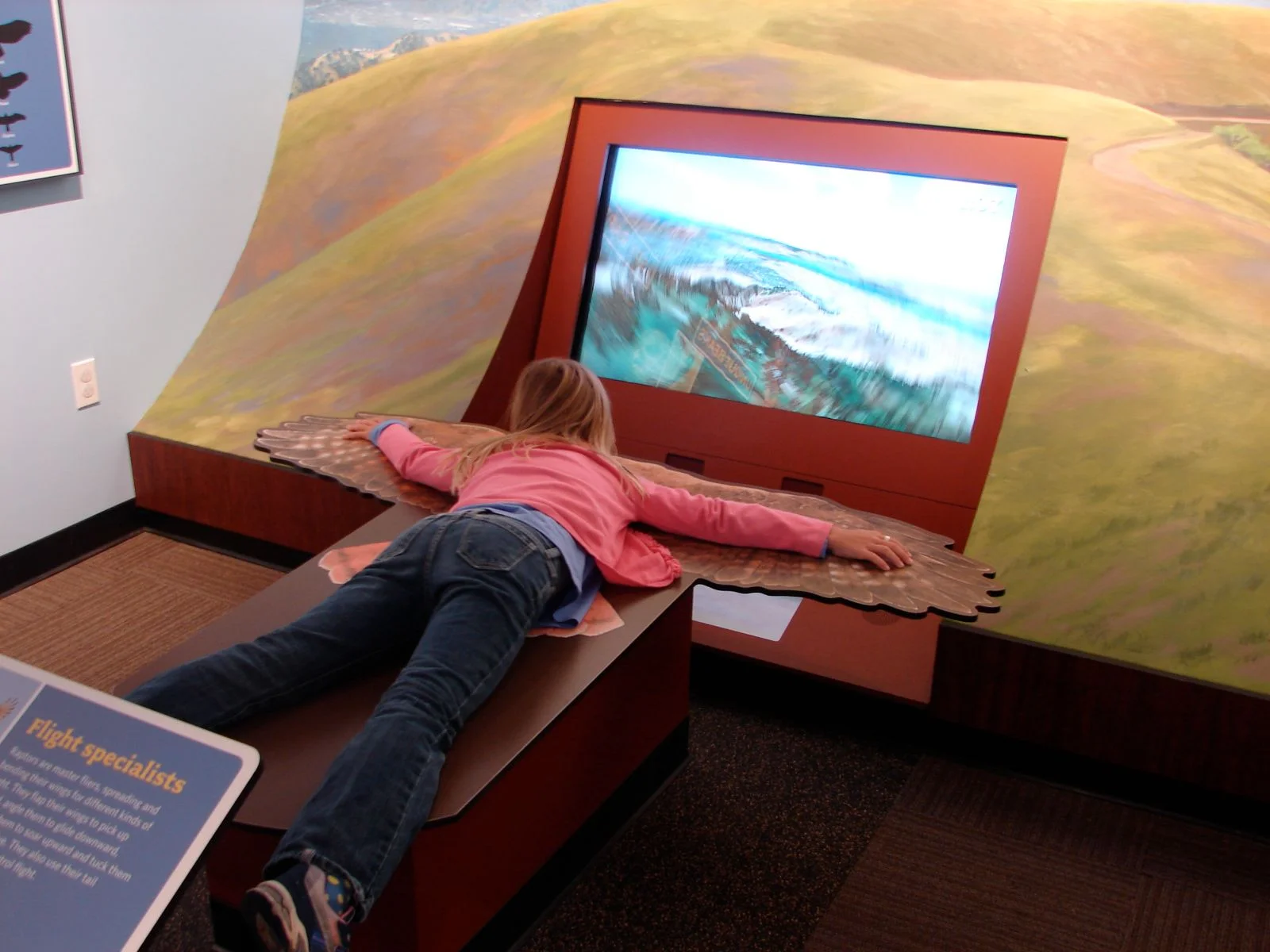

































Walnut Creek, CA 2006-2018
The exhibits at the Lindsay focus on several live California native wildlife animal ambassadors, that due to injury or familiarity with humans, cannot be released back into the wild. Since 2006 we have developed several key exhibit spaces including the Raptor Gallery, Behind the Scenes at the Animal Hospital, What’s Wild/What’s Not, and the Porcupine Exhibit. In 2018, along with The Acorn Group, we helped to develop an Interpretive Master Plan that will insure the continuity of exhibit development and design for the next ten years.
Project Credits: James Freed, Bo Hick, Brent White, Lisa Park, Jessica Brainard, Katherine Whitney, Loren Behr, Michelle Setter, Tami Stewart, Paulina Paczkowska, Ali Pearson, and Marc Nicely. Fabrication by Group Delphi, Marc Nicely, and Bill Stockton.

This interactive exhibit allows visitors to fly virtually over Mt. Diablo. Sensors in the wings of the hawk shaped bench allows control of the flight simulation experience.

The Raptor Gallery includes exhibits that show information such as differences in wingspan, flight features, and the acute vision of these unique birds of prey.

This exhibit allows visitors to watch actual medical procedures performed by the veterinary staff. The treatment room is separated from the observation gallery by one-way glass, so the animal patients never see the humans watching. A high definition video camera can capture up close images during procedures in real time, while visitors watch on the big screen shown above.

Simulated microscopes allow the visitor to see what different animal disease vectors look like up close.

This interactive exhibit allows visitors to compare several different microscopic organisms and choose the one they think best matches the sample in the “microscope”.

This exhibit features real x-ray images of previous patients showing a variety of animal injuries and ailments.

This interactive video exhibit has visitors choose meals for several different animal patients from a list of possible foods. When the correct foods have been chosen an animation plays to let them know they got it right.

The What’s Wild- What’s Not exhibit teaches visitors that wild animals don’t make good pets, and that pets should be cared for so that they pose the least harm possible to wildlife.

Guinea Pigs make great pets. These at the Lindsay can be handled by visitors when a volunteer trainer is present.

The rats have clear tubing that they can travel in between the satellite enclosure inside the gallery space and their main enclosure in the wall tank. Visitors can watch them scurry back and forth.

Volunteers at the Lindsay give presentations with the animals inside the gallery. Visitors are provided with bench seating that also has graphics on the seating surface, and storage inside.

Each of the 5 discs has a different question and visitors can reveal the answer by rotating the disc.

Fundraising becomes part of this exhibit. Each leaf color shows a different donation level. Donors have their names printed on the leaf. More leaves can be added as more donations are made.

This Porcupine was raised in captivity and is habituated to humans. She can no longer survive on her own in the wild.
